Mongolian Diatoms
Diatoms are a large group of microscopic
algae that grow as single cells or small colonies and are characterized
by a cell wall made of biogenic opaline silica, essentially biologically
produced glass.
Diatoms are an important part of
the primary producer community in most aquatic habitats, in fact, they
are commonly found in any habitat that experiences even ephemeral moisture
(e.g., desert cryptogamic crusts or antarctic lakes which partially thaw
for only a few weeks each year, Johansen 1993, Spaulding et al. 1996).
They often live within narrow environmental conditions which, depending
on species, can be indicative of pollution, water temperature, water depth,
nutrient levels, or salinity (Lowe 1974, Fritz et al. 1991, Van Dam et
al. 1994). These qualities make diatoms excellent study organisms
and highlight their potential for future research efforts in Mongolia.
Their ease of preservation has allowed scientists to study lengthy fossil
and subfossil records to hindcast past environmental and climatic histories
(Dixit et al. 1992, Edlund et al. 1995), determine evolutionary history
(Theriot 1992), and utilize diatoms as stratigraphic indicators (Bradbury
et al. 1994). Extant diatom populations are commonly employed in
monitoring efforts (Hunsaker and Carpenter 1990), as experimental organisms
(Kilham et al. 1996), and as indicators of ecosystem health (Lowe and Pan
1996).
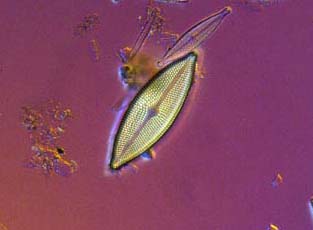
Aneumastusspecies, Lake
Hovsgol
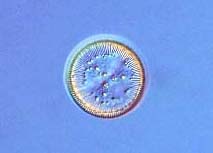
Cyclotella ocellata, the
most common
planktonic diatom in Lake Hovsgol
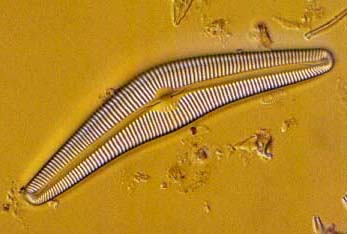
Cymbella cistulavar. ?,
abundant in the spring periphyton
of nearshore Lake Hovsgol
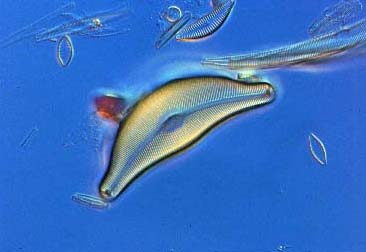
Cymbella stuxbergii, abundant
in the spring periphyton of
nearshore Lake Hovsgol
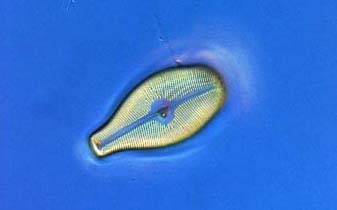
Didymosphenia siberica,
abundant in the spring periphyton
of nearshore Lake Hovsgol
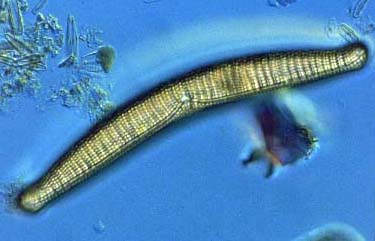
Epithemiaspecies, Lake Hovsgol
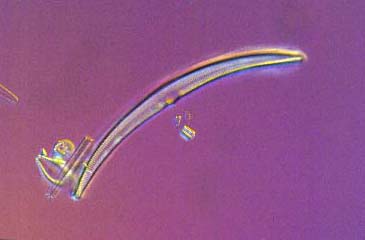
Hannaea arcus, abundant
in the spring periphyton of nearshore
Lake Hovsgol
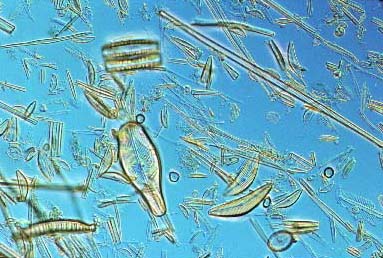
Low magnification shot of periphyton
in Lake Hovsgol
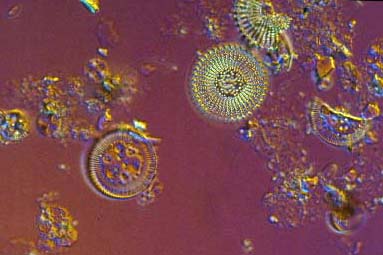
Subfossil specimens of Stephanodiscusand
Cyclotellafrom
sediments in Lake Hovsgol


